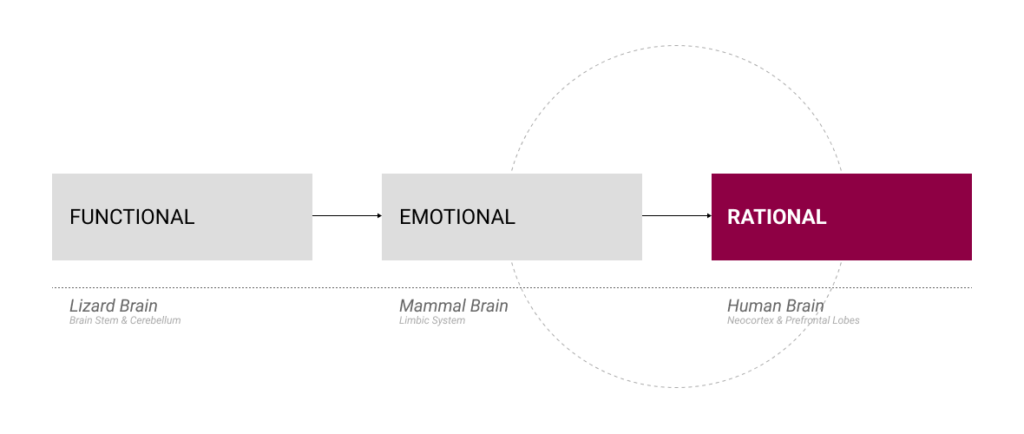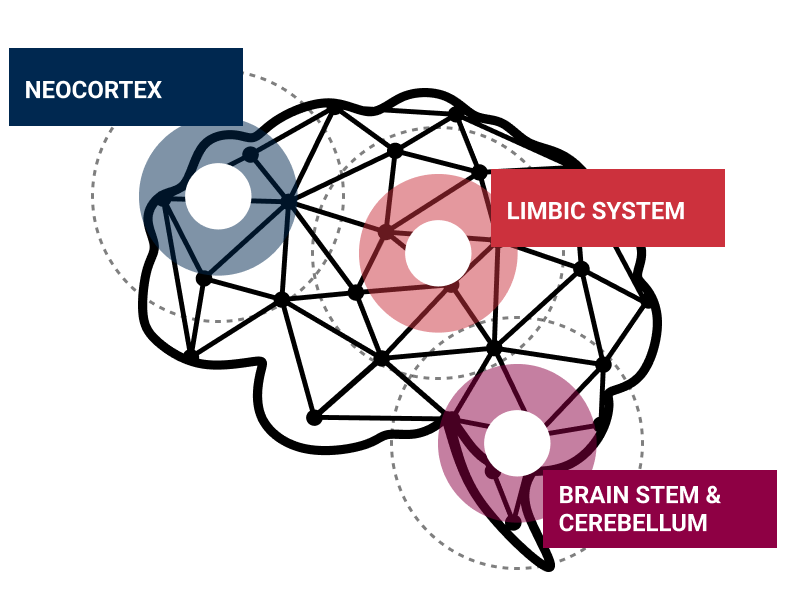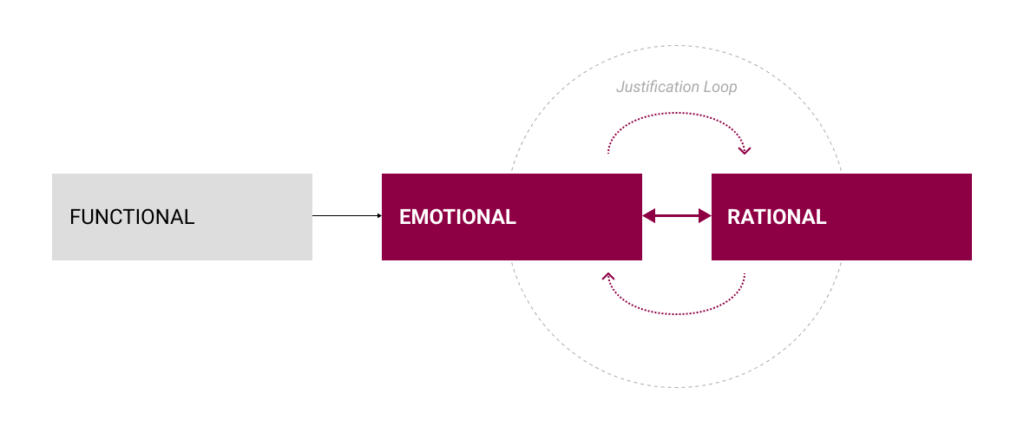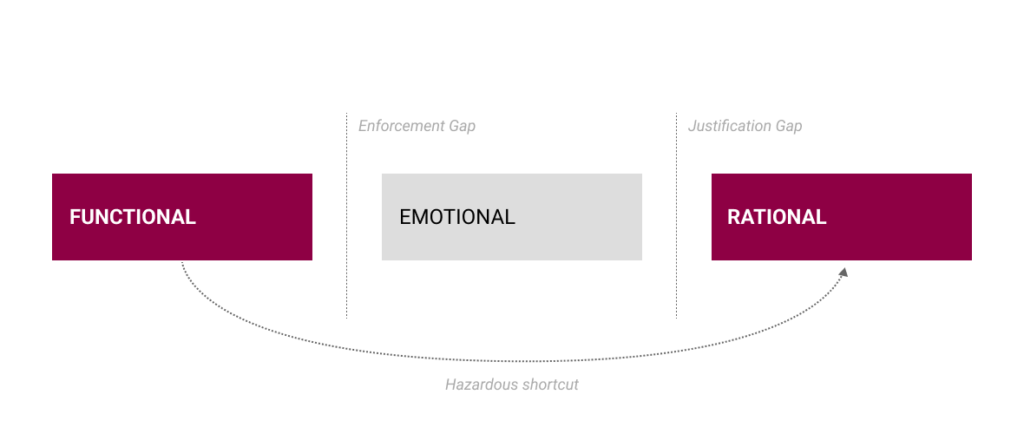Benefit Hierarchy

What is a Benefit Hierarchy and how a Benefit can be perceived in terms of Value?
WHAT IS IT
Generally speaking, defining a benefit is always a tricky request.
A benefit is something that is advantageous or good. It can refer to something that helps or improves a situation or something that is desirable or pleasing. Benefits can be tangible, such as an object or service, or intangible, such as a feeling or sense of satisfaction. They can also be financial, physical, or psychological in nature. For example, the benefit of exercising regularly might be improved physical health and a sense of well-being, while the benefit of a new job might be a higher salary and better working conditions.
The perception of a benefit may vary from person to person, when we talk about professional benefits, your employer may grant you a car, or relocation bonus. It’s never about the benefit itself but the outcomes of that benefit will grant us a positive change of status.
Benefit perception refers to the way in which customers perceive the benefits of a product or service. These benefits can fall within three categories: functional, emotional, and rational.
- Functional benefits are the tangible, practical benefits that a product or service provides.
These benefits are related to the way the product or service performs or functions, and they address the basic needs and desires of the customer. Examples of functional benefits might include durability, reliability, affordability, and convenience. - Emotional benefits are the intangible, subjective benefits that a product or service provides.
These benefits are related to the feelings or emotional states that the product or service evokes in the customer. Examples of emotional benefits might include happiness, security, self-esteem, and pride. - Rational benefits are the logical, intellectual benefits that a product or service provides. These benefits are related to the way the product or service helps the customer to achieve a specific goal or objective. Examples of rational benefits might include efficiency, effectiveness, and productivity.
Understanding the functional, emotional, and rational benefits of a product or service is important for companies because it helps them to identify and communicate the value of their offering to their customers. By highlighting the benefits that are most important to their target audience, companies can more effectively differentiate themselves from the competition and attract the right customers.

At a biological level, the perception of a benefit is driven by our brain, specifically by the three parts of our human brain that evolved through millennia, during different stages of our evolution.
These three parts work somehow autonomously and focus on different aspects of our everyday life, that’s why this representation is called the Triune Brain:
- The Brain Stem and the Cerebellum
- The Limbic System
- The NeoCortex

-
Functional benefits and the Lizard Brain
Functional benefits are perceived by our lizard brain, which is the oldest and most primal part of the brain.
The lizard brain is responsible for our basic survival instincts, such as the flight or fight response. It operates at a subconscious level and is not under our conscious control.
One way in which the lizard brain influences our perception of functional benefits is through hoarding dynamics.
The lizard brain is constantly seeking to maximize gain and minimize loss in order to ensure our survival. This can manifest in various ways, such as the "all you can eat" effect, where our instinct drives us to consume as much as possible in order to have a surplus in case of future scarcity.
Another way in which the lizard brain influences our perception of functional benefits is through our primal need for security and safety.
We are hardwired to seek out products and services that provide us with a sense of security and protect us from harm.
For example, we might be more likely to purchase a car with advanced safety features or a home security system because they provide us with a sense of protection and peace of mind. Understanding the influence of the lizard brain on our perception of functional benefits can be helpful for companies as they develop their marketing strategies, by highlighting the functional benefits of their products and services that address our primal needs for survival and security.
-
Emotional benefits and the Mammal Brain
Emotional benefits are perceived by our limbic system, also known as the mammal brain.
The limbic system is responsible for our emotions and is highly susceptible to being influenced by stories. It is the part of the brain that loves stories and craves engagement and connection.
One way in which the limbic system influences our perception of emotional benefits is through its role in impulse buying. When we are emotionally invested in a product or service, we are more likely to make impulsive purchases without fully considering the consequences. This is because the limbic system is focused on the immediate pleasure or reward of the purchase, rather than the long-term implications.
Another way in which the limbic system influences our perception of emotional benefits is through its need to feel like we are part of something larger than ourselves. We are wired to seek out products and services that allow us to connect with others and feel like we are part of a community or movement. For example, a company that markets its product as a way to make a positive impact on the world might be more appealing to our limbic system because it allows us to feel like we are part of something meaningful and larger than ourselves.
Understanding the influence of the limbic system on our perception of emotional benefits can be helpful for companies as they develop their marketing strategies by telling compelling stories and highlighting the emotional benefits of their products and services. -
Rational benefits and the Human Brain
Rational benefits are perceived by the modern brain, specifically the neocortex and the prefrontal lobes. The neocortex is the part of the brain responsible for higher cognitive functions such as reasoning and decision-making, while the prefrontal lobes are involved in planning and problem-solving. Together, these areas of the brain enable us to evaluate and rationalize intellectual benefits, such as ethics, sustainability, and social impact.
One way in which the modern brain influences our perception of rational benefits is through its ability to analyze and compare different options. When making a purchase decision, we often weigh the pros and cons of different products and services based on their rational benefits. For example, we might consider the environmental impact of a product or the social responsibility of a company before making a purchase.
Another way in which the modern brain influences our perception of rational benefits is through its ability to consider long-term implications. While the limbic system is focused on immediate pleasure or reward, the modern brain is capable of considering the long-term consequences of our actions. This is why rational benefits such as sustainability and social impact can be particularly appealing, as they allow us to make choices that align with our values and long-term goals.
Understanding the influence of the modern brain on our perception of rational benefits can be helpful for companies as they develop their marketing strategies by highlighting the rational benefits of their products and services.
WHY IT IS RELEVANT
Defining customer benefits is essential for a brand because it helps to clearly communicate the value that the brand’s product or service offers to its customers.
This is important because customers are more likely to choose a product or service that meets their needs and provides them with value. When a brand clearly communicates the benefits of its product or service, it can more effectively differentiate itself from the competition and attract the right customers.
Defining customer benefits can help a brand to focus its marketing efforts and messaging on the most important and relevant aspects of its offering.
This can help the brand to more effectively reach and resonate with its target audience, ultimately leading to increased sales and customer loyalty.
Defining customer benefits is also important from an internal team perspective because it helps to align the team around a clear, shared understanding of the value that the brand’s product or service offers to its customers. This can help to improve teamwork and collaboration, as all team members are working towards the same goal of delivering value to customers.
Defining customer benefits can also help to inform and guide decision-making within the team, as it provides a clear focus for the team to follow when making strategic and tactical choices. Additionally, defining customer benefits can help to motivate and engage team members, as they can see the tangible value that they are contributing to the brand’s customers through their work.
By clearly communicating the benefits that the brand’s product or service offers to its customers, external providers and outsourcers can better understand the needs and expectations of the brand’s customers and tailor their services accordingly. This can help to improve the overall customer experience and drive customer loyalty. Additionally, defining customer benefits can help to ensure that external providers and outsourcers are able to effectively communicate the value of the brand’s offering to their own customers, which can be especially important in cases where the external provider or outsourcer is representing the brand in the market.
... but there is a catch...

In order to win the audience’s heart, you need to cover the whole range of expected benefits, starting from the left and going to the right, in this order and sequentially.
By providing an emotional benefit after a functional one, the values you try to convey are enforced and the convincing power of your marketing strategy is multiplied.
By providing a rational benefit after an emotional one, you give the audience a positive justification for their buy-in, which seal the brand positioning inside their mind.

Once your value positioning is well established, you can design a justification loop balancing between rational and emotional benefits without reputational risks.
EXAMPLE
Coca-Cola started off with a unique selling proposition of “refreshing the world“, it’s a benefit not directly leveraged anymore.
... there is always a catch...

If we look at the market, power brands and innovative brands with not-so-linear offerings, use to take a hazardous shortcut: trying to undercut the competition, by going straight from functional benefits to rational ones as soon as possible.
Imagine a Value Proposition very direct telling you that you need them, and at the same time, state they are the best. No need for storytelling, just sheer results. Storytelling will come at a later time.
Does it work? Yes, but there is always a catch:
- 1st scenario: If your functional benefit is loose and not-so-strong when the rationale kicks in, you will be left without authority.
- 2nd scenario: your functional benefit is too good, unbelievably good, therefore, when rationale kicks in, drawbacks are weighted more than benefits in the evaluation.
A case for each scenario can be found in the “Play with Examples” section of this article.
USE IT FOR
Be sure to rely on a benefit hierarchy model to ensure that all the benefits are communicated in the right way and in the right order.
A benefit hierarchy is a framework or structure that organizes the benefits of a product or service in order of importance or significance.
It allows a company to identify the most important benefits of its offering and prioritize them in its marketing and sales efforts.
By identifying and organizing the benefits of a product or service in a benefit hierarchy, a company can more effectively target and communicate with its customers, highlighting the most important and relevant benefits for each customer segment.
The benefits in a benefit hierarchy are typically organized from the most basic or functional level to the most emotional or aspirational level, such as the one described in this article, Functional, Emotional, and Rationale.
Other more articulated benefit hierarchy models are borrowed from branding and marketing tools, such as the “Benefit Ladder” or “The Brand Pyramid“

REQUIREMENTS
-
Key People
Gather key people accountable for knowing the product and the offering. C-Levels are generally required to validate the output, D-Levels and Managers are required if the scope level is bound to a business line, Managers and Product Owners if values refer to a product.
-
A Workshop Space
To define Benefits, a workshop or a brainstorming session works best. Be sure to have a large table or a big wall as a working canvas to work respectively with cards or post-its.
-
External Data and POVs
Bring at the discussion external points of view from outside your organization, such as competitor analysis, survey, and other researches. External data can be used to inpire, inform or even challenge internal belief and avoid hindsights.
STEP BY STEP
-
Gather all features about your offering
Work along with your product owner and marketing manager to highlight all the relevant features of your offering (product or service). Weight every item of the list with a score and use this scored list as a baseline for the evaluation.
-
Analyze the market
Use the baseline to analyse the market: try to understand how they craft their story about their features, how they turn weak points in strengths. Use a Value Curve or a Strategy Canvas to measure against your offerings and benefits.
-
Know your Audience
Once you got hold of the competitive landscape, switch from the audience perspective. Gather all the information you can to build a 360 audience view. Discard irrelevant or inferred data, highlight obvious information to treat them carefully and take note of interesting or strange ones.
-
Design the Benefit Hierarchy
Design your benefit hierarchy starting from the functional aspects up to the rational ones. Once the ladder is complete, take a second review to rephrase them from the audience perspective. Take a their review to rewrite them with a distintive spin, it will help you when you will need to craft the Unique Selling Proposition, the Promises and thus defining a Value Proposition for the business line.
-
Align the Organization
Produces a sharable model or visualisation to align the organisation about the benefits we want to provide (hence the Promise ), the way we want to achieve it (hence the Unique Selling Proposition).
-
Keep Testing the Benefit Perception
It's a never ending process, since a benefit perception is like a chess play: your audience perception may shift according to your competitor moves. You need to design a iterative process of testing your knowledge you have of the intended audience.
PLAY WITH EXAMPLES
BAD PRACTICE CASE #1
Starting from a functional commodity, skyrocketing to a rationale ambiguity, and going back to struck emotional chords…
A 2019 Gillette advert which references bullying, the #MeToo movement and toxic masculinity has split opinion online.
The ad has been watched more than 2 million times on YouTube in 48 hours and gathered 23,000 likes and 214,000 dislikes, until it was taken down.
Comments on the video are largely negative, with viewers saying they will never buy Gillette products again or that the advert was “feminist propaganda”.
BAD PRACTICE CASE #2
Starting from an awesome functional benefit, unwillingly triggered a rationale ambiguity, and going back to struck emotional chords…
Amazon is incredibly useful, the value for money benefit is staggeringly high, so high that customers start to value the service with different rationales.
Personal gain leave room for ethical, social, and environmental concerns, without addressing the whole spectrum of benefits types, consumers’ minds and reasoning may be unpredictable.



